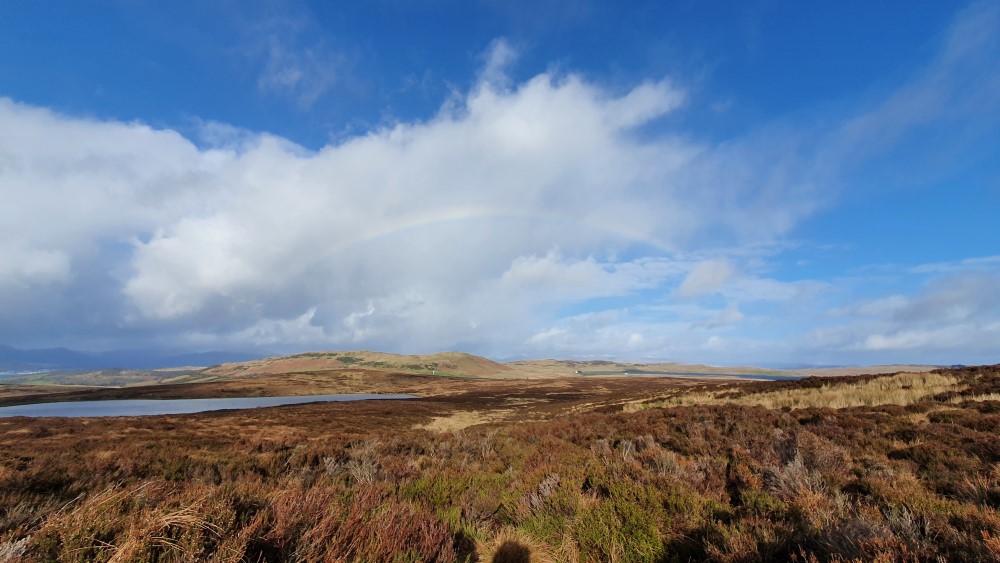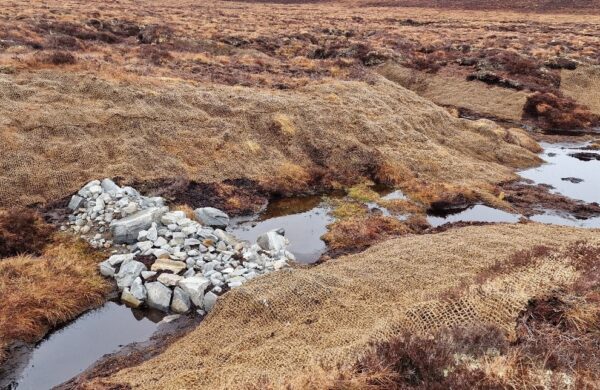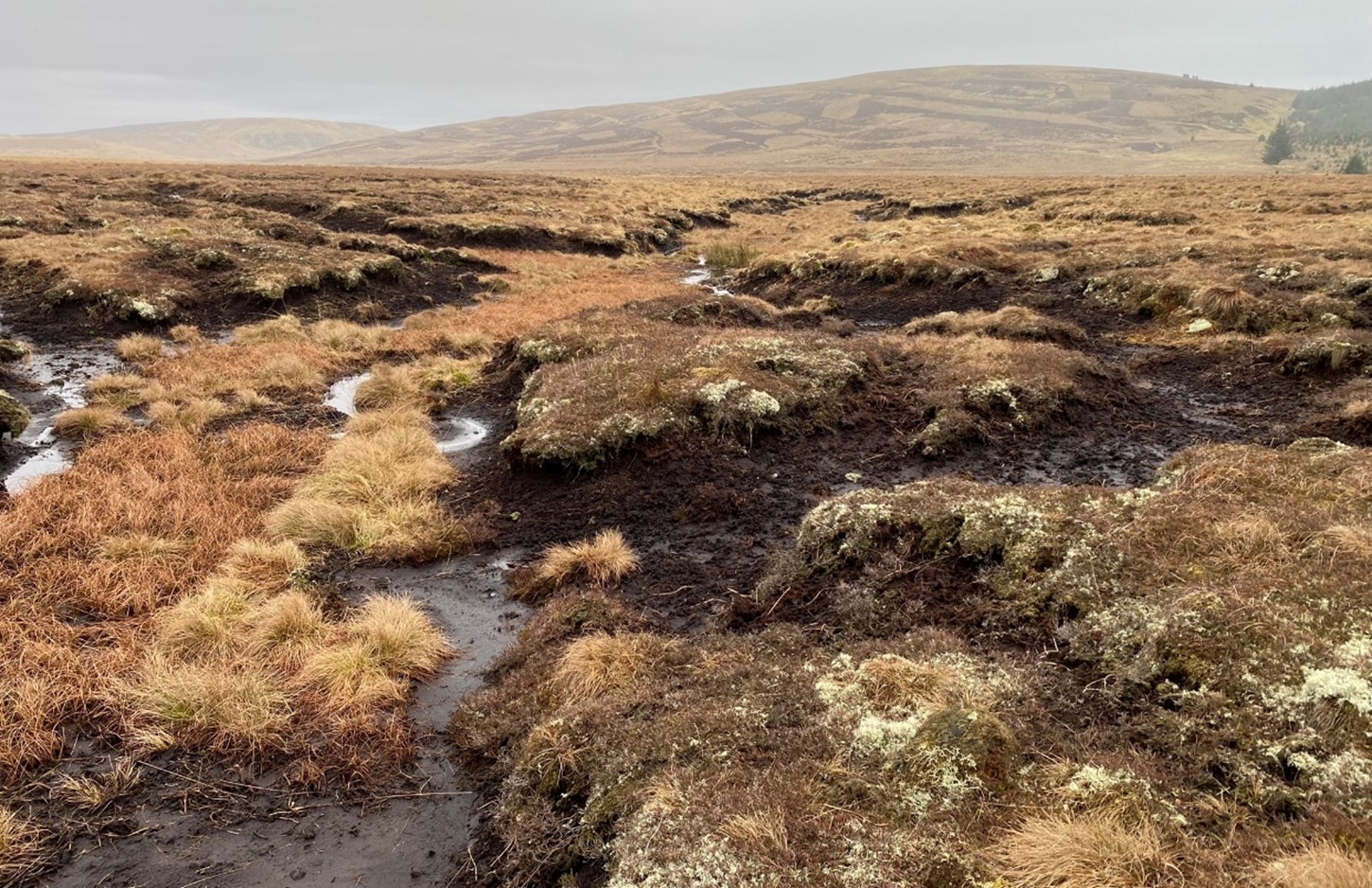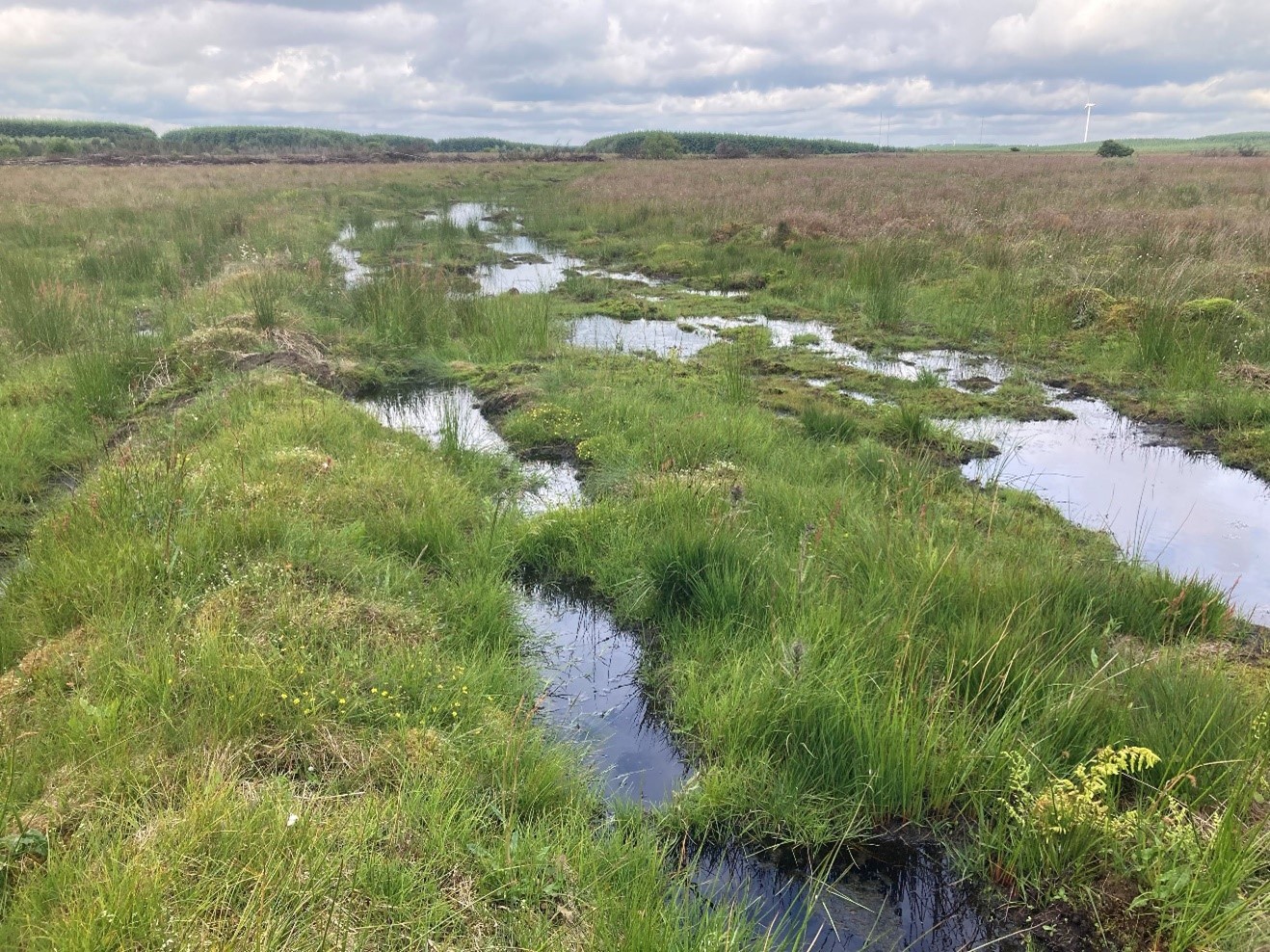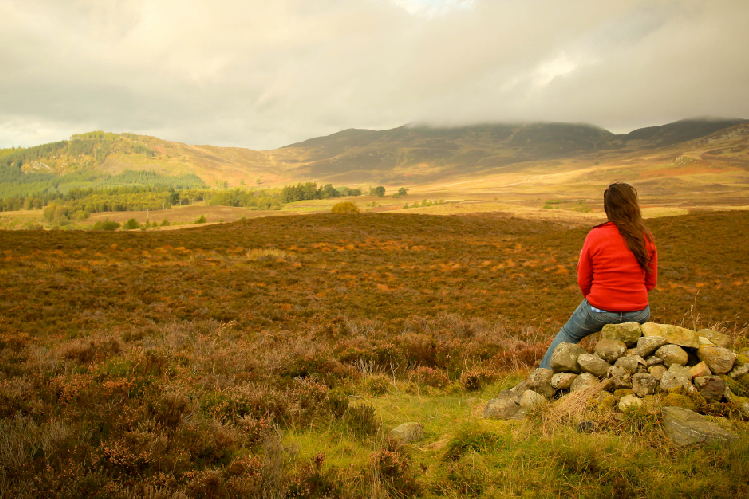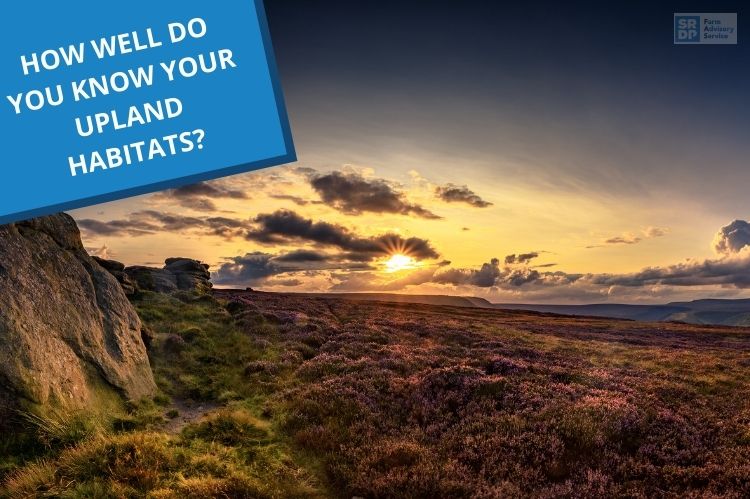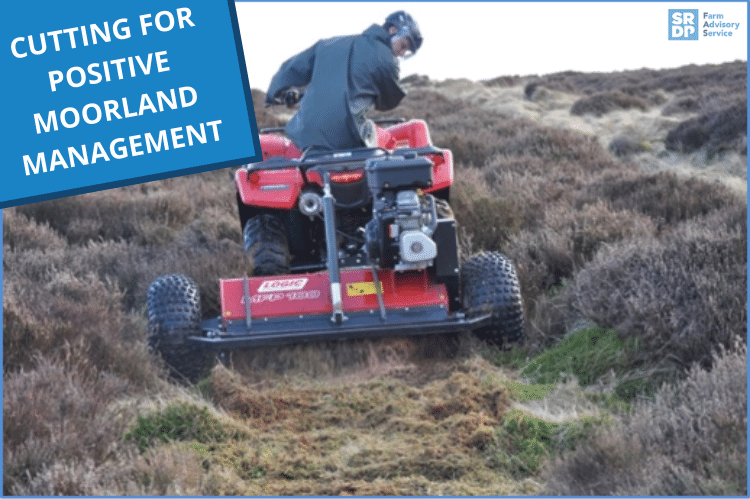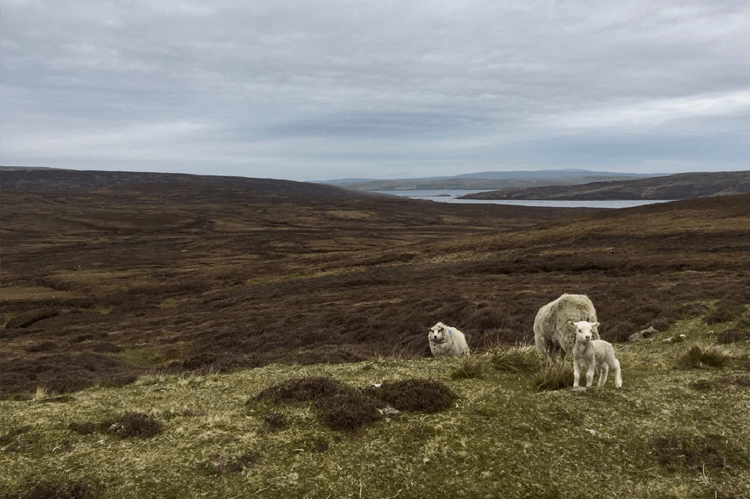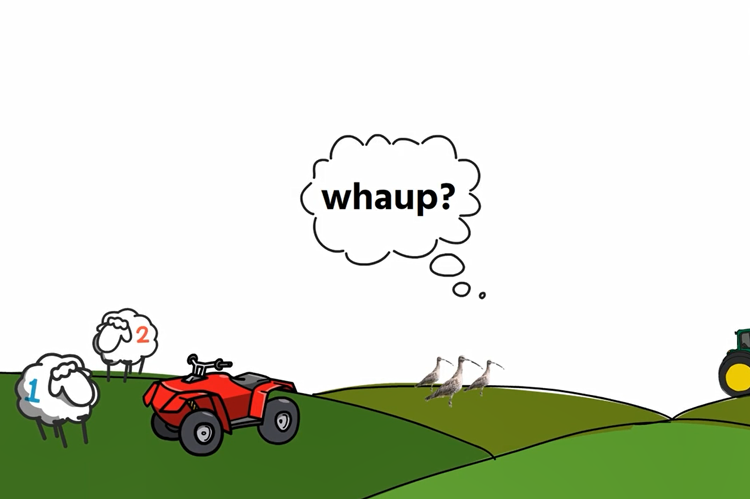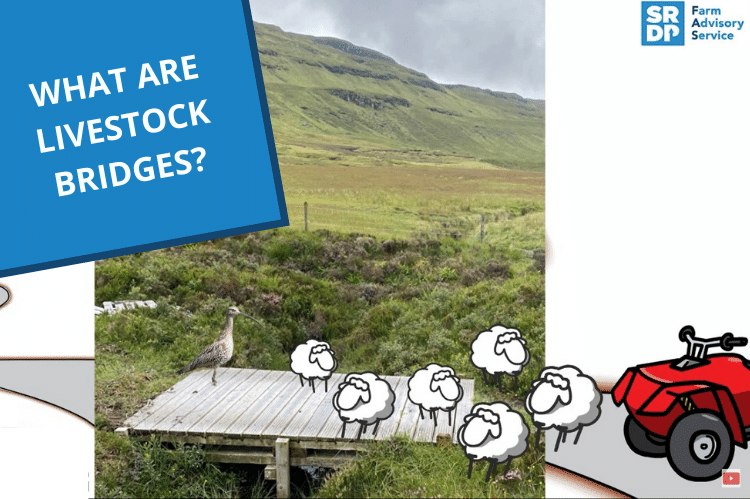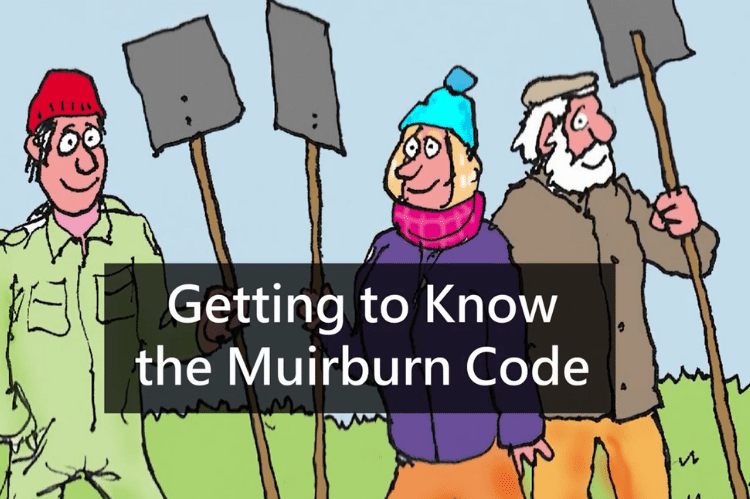Protecting Scotland's Peatlands
Peatlands are internationally important habitats, regulators of water flow and quality, and provide crucial services in the face of a changing climate; reducing the risks of flooding and wildfire spread. They are also places of employment, food production and recreation, and play an important role in supporting our rural economy. However, when damaged or degraded they lose these abilities. As the largest natural store of carbon on land, keeping our peatlands in good condition, is also integral to tackling climate change.
More than 20% of our land in Scotland is covered by peat and peaty soils, much of which are present on agricultural land.
Peat is formed as the remains of plants such as sphagnum mosses partly decompose and compress accumulating over thousands of years. While there are varying definitions, for land to be classed as peatland, the peat must typically be a minimum of 50 cm deep and covered by semi-natural vegetation. Peatlands are characterised by poor drainage and waterlogged conditions, a high organic content (typically more than 60% organic matter) and the vegetation cover consists of sphagnum and other mosses, sedges and dwarf-shrubs.
There are two main natural peatland habitat types in Scotland. Blanket bogs are the most extensive peatland habitat. They cover around 2 million hectares and are found in the upland areas particularly in the Highlands, the Northern and the Western Isles. Raised bogs are found in lowlands where they appear as domes of peat growing to 10 metres or more in height. Other bog habitats known as fens and bog woodlands are much rarer but can also be found across Scotland.
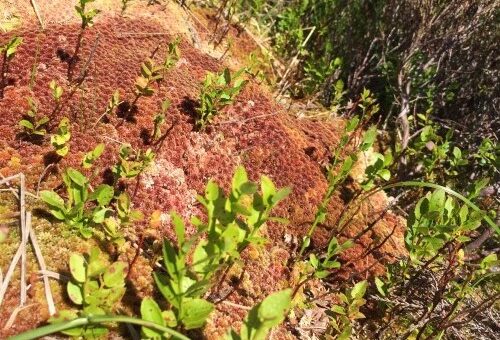
Protecting Scotland's Peatlands
Peatland Restoration presents several benefits for farmers and crofters in Scotland. It can help with:
- Flood mitigation
- Biodiversity
- Drought mitigation
- Water quality
- Healthier watercourses
Beyond the immediate benefits to your land, the increasing demand for peatland restoration by both the public and private sector means that there are potential diversification opportunities as businesses offering restoration services.
FAS is collaborating with Peatland ACTION to deliver a series of events that will better help you understand the benefits and opportunities available now.
Each event is delivered in partnership with local peatland agents, and will be tailored to the specific needs of the region. You can find more details about them below:
Peatland Restoration - The Flow Country | Events helping farmers in Scotland | Farm Advisory Service
Protecting Scotland's Peatlands
While peatlands cover more than a fifth of Scotland, globally, peatlands are rare.
By protecting peatland habitats, we protect their unique biodiversity, their ability to regulate water in the landscape and their historic and cultural significance. Within Scotland there are a range of legal protections in place.
The Scottish Government has developed Good Agricultural and Environmental Conditions (GAECs) requirements working closely with NatureScot, as well as SEPA and other organisations. From January 2025 new GAEC standards for the protection of peatlands and wetlands came into effect. The commitment was announced in 2023 to ensure Scotland remains aligned with protections at EU level. GAECs are part of the cross-compliance requirements for farmers and crofters in receipt of the Basic Payment Scheme (BPS) and other agriculture support.
The Wildlife Management & Muirburn (Scotland) Act 2024 passed Royal Assent in April 2024 and introduces the requirement for a muirburn licence. No start date has yet been announced for the introduction of the licence, but NatureScot is working to the expectation of autumn 2025. It is intended to protect peatlands, prevent environmental damage and allow any benefits of muirburn to be continued. From commencement, all muirburn will require a licence – not having one will constitute an offence. Licensable purposes will be highly limited in scope.
National Planning Framework 4 (NPF4) is our national spatial strategy for Scotland. It sets out our spatial principles, regional priorities, national developments and national planning policy. Within NPF4, principles include the protection of carbon-rich soils, restoration of peatlands and minimise disturbance to soils from development.
For the latest application processes and deadlines, please visit PEATLAND ACTION
Restoring Scotland's Peatlands
Peatlands play an important role in the Scottish landscape but eroding peatlands can cause many issues. Degraded peatland can decrease vegetation cover impacting on grazing quality, deep drains and gullies can trap livestock and game, and water pollution from eroding peat can reduce water quality in burns and rivers. Degraded peatlands are also a major source of greenhouse gas emissions, accounting for more than 15% of total annual emissions in Scotland, second only to transport.
Historical land use, drainage, muirburn but also peat extraction, atmospheric pollution and human-driven climate change led to erosion of peatlands and degradation or loss of these important habitats
The main goal of peatland restoration is to increase the water table and create conditions to encourage the typical peatland vegetation to naturally recover helping put peatlands back on the road to recovery.
The Scottish Government has committed to invest £250 million to restore 250,000 hectares of peatlands across Scotland by 2030. Peatland ACTION is Scotland’s national programme to restore peatlands providing funding, support and advice to landowners and managers considering peatland restoration.
Restoring Scotland’s peatlands plays a key role in:
- Supporting biodiversity
- Maintaining good water quality
- Supporting farming, crofting, tourism, game and fisheries
- Preventing droughts and wildfire spread
- Alleviating flash flooding
- Protecting historical and cultural heritage
- Storing carbon
Further Resources
Peatlands Practical Guide
Download and read our practical guide on what peatlands are, their status, the different types of peatlands and the benefits of peatland restoration.
Practical Steps to Peatland Restoration
Understanding what is involved in peatland restoration can be a challenge especially if it is a new concept to you. This article will breakdown the how of peatland restoration covering first steps including identifying degraded peatland all the way through to grazing management.
Peatland Restoration - Your Most Pressing Questions Answered
Have you been considering peatland restoration on your farm and croft, but there are still a few questions you need answered? In this article, we addressed the most frequently asked questions and debunked some of the most common misconceptions about peatland restoration.
Farm Peatland Restoration At Leadloch Farm, A Case Study and Guide
Find out more about the peatland restoration projects - This case study of a year-long peatland restoration project aims to give readers an overview of how farmers and landowners in Scotland are successfully managing and completing these projects.

Peatland ACTION Case Studies
Featured Case Study at Tardoes Farm, East Ayrshire
Managing Scotland's Peatlands
Scottish peatlands have been exposed to various land management types including historical practices which have modified the peatland habitats to various extents.
While some practices, such as forestry and large-scale peat extraction, are no longer supported by current policy, other land uses still have the potential to alter the peatland hydrology, resulting in change in vegetation cover, peat erosion and degradation or loss of the peatland habitat. However, if managed sustainably, some current land uses can be complementary to the management of a healthy peatlands.
Examples of land use which can co-exist and be supported by healthy peatlands include:
- Livestock grazing
- Deer management
- Grouse moor management
- Low-impact tourism or recreation activities
- Peatland restoration
Managers of peatlands need to consider a range of factors to maintain healthy peatlands or ensure recovery of previously restored peatland areas and should consider obligations and incentives surrounding peatlands.
AECS
The Agri-Environment Climate Scheme (AECS) promotes land management practices which protect and enhance Scotland's natural heritage. AECS is available for moorland management including some restoration work. Following restoration, AECS can support with annual management payments of peatland.
One of the options for securing ongoing, long-term financing for peatland management is the Peatland Code. Landowners and managers can register peatland restoration projects with the IUCN UK Peatland Programme Peatland Code with a view to entering the carbon market to receive payments for part of the initial peatland restoration and/or ongoing management. The IUCN Peatland Code is a voluntary certification standard for UK peatland projects wishing to market the climate benefits of peatland restoration.
Managing a healthy peatland and ensuring recovery of areas of restored peatland should take deer management and grazing densities into account. Following restoration higher herbivore pressure has the potential to compromise the ecological recovery putting restoration project objectives at risk. For Peatland ACTION-funded restoration projects, herbivore guidance is available to inform ongoing management.
Further Resources
Financing Peatland Restoration
For Peatland Restoration, there are both public and private funding streams available and this article will give you an understanding of the two different streams.
Peatland ACTION - Assessing Herbivore Impact for Peatland ACTION Applications
Read the Peatland ACTION guide on how herbivore pressure, such as deer and livestock, have on peatlands,
How well do you know your uplands?
We often talk about 'Heather Moorlands' when referring to the uplands, but there are three distinct upland habitats in which ling heather plays a prominent part. In this video, filmed mostly on the Wildlife Estates Scotland accredited Finzean Estate in Aberdeenshire, conservation specialist, Paul Chapman, explains how to differentiate between Dry Heath, Wet Heath and Blanket Bog.
Cutting for Positive Moorland Management
In this episode of the Thrill of the Hill series Alex Pirie talks to the project coordinator for the Ayrshire Coalfield Environment Initiative, Daisy Whytock about a range of topics and issues, conflicts between woodlands and peatland, the importance of peatland as a carbon sink, responsible peatland utilisation and the role of peatland for pollinators.
Podcast: Thrill of The Hill - Enhancing Peatlands
The cutting of heather is a viable alternative to muirburn to manage moorland habitats in areas where there is deep peat, surrounding woodland and a shortage of labour. This video gives more information on the advantages of cutting and shows the results seen on farm.
Podcast: Thrill of The Hill - Heather Management
This podcast discusses the state of Scotland’s moorlands, with conversation ranging from hot topics like burning, as well as swiping and grazing for heather management, the carbon holding potential of peat and biodiversity value of these unique habitats.
Biodiversity in Peatlands
Information Note: Peatland Management for Crofters, Farmers, and Land Managers
If peatlands form part of your land holdings, you’ll want to be aware of the risk and opportunities they represent. Recent developments in government funding and carbon markets may present an opportunity to restore damaged landscapes and generate income. Find out more in our Information Note.
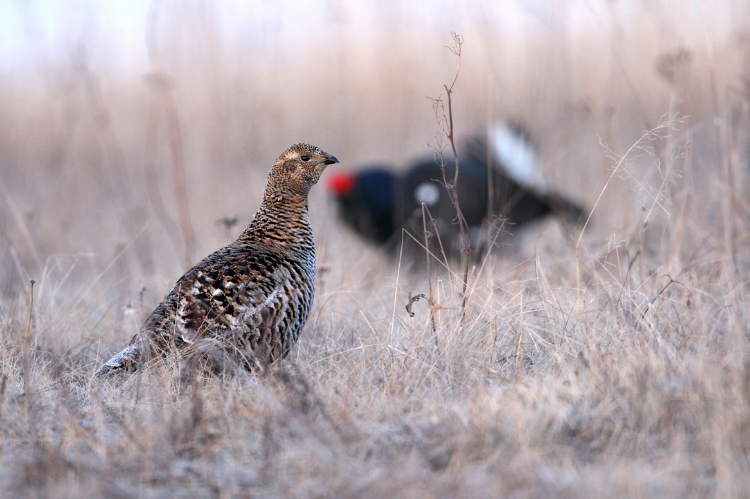
Managing Peatlands to Benefit Upland Birds
Scotland’s peatlands provide habitats for a many of our upland birds, some of which are not only classified as Birds of Conservation Concern, but some can be found in Scotland's list of National Priority Species. Find out more about how to manage your uplands to benefit upland birds visit our webpage.
Recording biodiversity on your farm or croft
Find out more about 'Using Technology to Record Biodiversity' We've highlighted some of the more common and user friendly apps and downloads that can help you build up a resource detailing the natural capital on your farm.
Our peatlands are home to a host of Scotland's wildlife, including some of our Priority Species. Using livestock bridges when grazing moorlands can help prevent negatively impacting the environment and biodiversity.
Muirburn can be a form of management on areas of moorland that have become rank from lack of grazing, however there are strict regulations around it's use. Find out more on our Muirburn Code webpage.
Sign up to the FAS newsletter
Receive updates on news, events and publications from Scotland’s Farm Advisory Service

